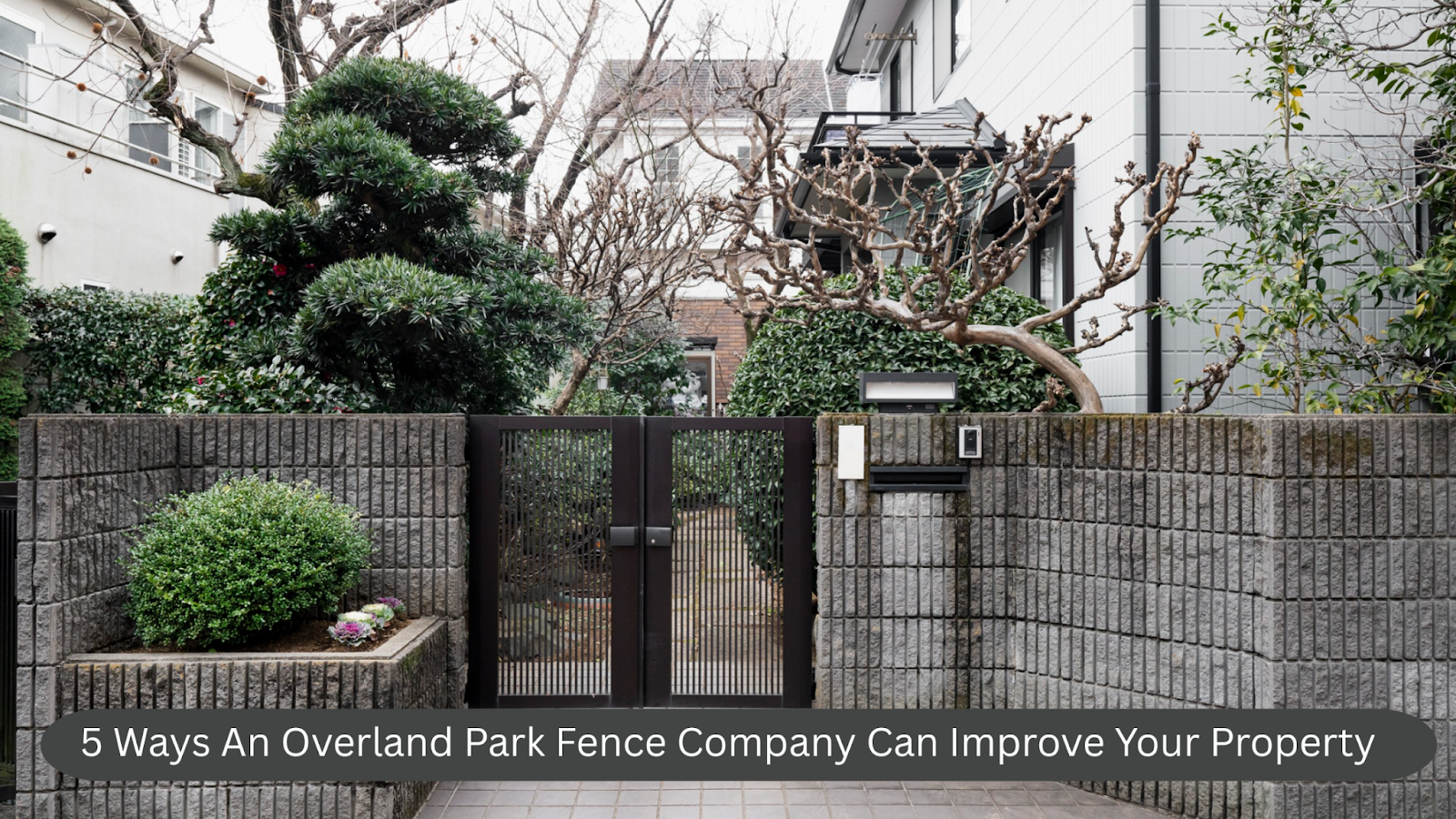Finance
Why Manhattan Homeowners Choose Professional Interior Design Services

Manhattan real estate represents some of the most valuable and competitive property markets in the world. Whether you own a pre-war apartment on the Upper East Side, a modern loft in SoHo, or a penthouse overlooking Central Park, maximizing both functionality and aesthetic appeal becomes essential for investment protection and daily living satisfaction.
Professional interior design services in Manhattan have evolved far beyond simple decoration. Today’s design professionals understand the unique challenges of urban living, from maximizing limited square footage to navigating co-op board requirements. They bring specialized expertise that transforms spaces into personalized sanctuaries that reflect individual style while maintaining practical functionality.
The decision to invest in professional design services represents a strategic approach to home ownership in one of the world’s most discerning markets. Manhattan homeowners increasingly recognize that professional design consultation delivers measurable returns through improved property values, enhanced daily living experiences, and solutions tailored to the city’s distinctive architectural landscape.
The Manhattan Design Challenge
Manhattan’s residential properties present unique design considerations that distinguish them from suburban or other urban markets. Space constraints rank among the most significant factors, with many apartments featuring rooms that serve multiple functions throughout the day. A dining area might double as a home office, while bedroom corners transform into reading nooks or exercise spaces.
Architectural elements add another layer of complexity. Pre-war buildings often feature beautiful details like crown molding, hardwood floors, and high ceilings, but they may also include awkward layouts, limited electrical capacity, or outdated plumbing configurations. Conversely, modern developments might offer contemporary amenities and efficient layouts while lacking character or presenting sterile environments that require warming through thoughtful design intervention.
Natural light availability varies dramatically between properties, floors, and orientations. North-facing apartments might receive consistent indirect light, while south-facing units could experience intense afternoon sun requiring careful window treatment planning. Professional designers understand how to work with existing light conditions rather than against them, creating spaces that feel bright and welcoming regardless of natural limitations.
Building regulations and co-op board requirements further complicate renovation and design projects. Many buildings restrict renovation hours, require specific contractor licensing, or mandate approval for structural changes. Experienced Manhattan interior design services navigate these requirements seamlessly, ensuring projects proceed smoothly without costly delays or compliance issues.
Investment Value Through Professional Design
Property values in Manhattan reflect numerous factors, with interior condition and design quality playing increasingly important roles in buyer decision-making. Professional design services contribute to property appreciation through strategic improvements that appeal to discerning Manhattan buyers.
Kitchen and bathroom renovations typically yield the highest returns on investment, particularly when executed with high-quality materials and thoughtful layouts. Professional designers understand which upgrades provide maximum value while avoiding over-improvements that exceed neighborhood standards. They balance luxury finishes with practical considerations like maintenance requirements and long-term durability.
Storage solutions represent another area where professional design delivers measurable value. Manhattan apartments rarely include adequate built-in storage, making creative storage integration essential for both functionality and appeal. Custom closet systems, built-in shelving, and multi-functional furniture selections can dramatically improve space utility while maintaining clean, uncluttered aesthetics that buyers prefer.
Color schemes and material selections influence the perception of space size and quality. Professional designers employ proven techniques to make rooms appear larger, brighter, and more luxurious through strategic color palettes, lighting design, and material coordination. These improvements create immediate positive impressions during property showings while providing daily enjoyment for current residents.
Specialized Expertise for Urban Living
Manhattan interior design services bring specialized knowledge that addresses the city’s unique living requirements. Sound management becomes crucial in buildings where neighbors share walls, floors, and ceilings. Designers incorporate acoustic solutions through material selections, room layouts, and furnishing choices that minimize sound transmission while maintaining aesthetic appeal.
Climate control optimization helps manage energy costs while ensuring year-round comfort. Manhattan apartments often feature older heating and cooling systems that create temperature variations throughout spaces. Professional designers understand how to work with existing systems through strategic furniture placement, window treatments, and material selections that promote consistent comfort levels.
Security considerations influence design decisions in urban environments. Ground-floor apartments might require window treatments that provide privacy without blocking natural light. Entry areas benefit from design elements that create visual barriers while maintaining welcoming atmospheres. Designers balance security needs with aesthetic preferences through creative solutions that address both concerns effectively.
Lifestyle integration becomes particularly important in smaller spaces where every square foot serves multiple purposes. Professional designers excel at creating flexible spaces that accommodate work, entertainment, relaxation, and storage needs without feeling cramped or chaotic. They understand how Manhattan residents actually live and design accordingly.
The Collaborative Design Process
Successful interior design projects in Manhattan require collaborative relationships between homeowners, designers, and various building stakeholders. Professional design services manage these relationships while keeping projects focused on client objectives and timeline requirements.
Initial consultations typically include comprehensive space assessments, lifestyle discussions, and budget planning. Experienced designers ask detailed questions about daily routines, entertaining preferences, storage needs, and long-term plans to develop design strategies that align with client priorities.
Project management becomes crucial in Manhattan’s complex building environment. Professional designers coordinate with building management, schedule work within permitted hours, and ensure all contractors meet building requirements. They handle permit applications, material delivery logistics, and progress monitoring while keeping clients informed throughout the process.
Budget management requires balancing quality expectations with financial realities. Manhattan projects often face premium pricing for materials, labor, and logistics due to building access challenges and market conditions. Professional designers help clients prioritize spending to achieve maximum impact within budget constraints while avoiding common cost overruns.
Beyond Aesthetics: Functional Excellence
Modern Manhattan interior design services prioritize functional excellence alongside visual appeal. Technology integration has become essential as residents increasingly work from home and rely on digital connectivity for entertainment, communication, and daily life management.
Lighting design extends beyond fixture selection to include layered lighting strategies that support various activities throughout the day. Professional designers create lighting plans that provide task lighting for work areas, ambient lighting for relaxation, and accent lighting that highlights architectural features or artwork.
Furniture selection focuses on pieces that serve multiple functions while maintaining comfort and style. Ottoman storage, expandable dining tables, and modular seating systems maximize utility without compromising aesthetics. Designers source pieces that fit through Manhattan building elevators and doorways while meeting specific client requirements.
Material durability becomes particularly important in high-use urban environments. Professional designers select finishes and furnishings that withstand daily wear while maintaining their appearance over time. They understand which materials perform well in Manhattan’s climate and building conditions.
Making the Right Choice for Your Space
Professional Interior design services in Manhattan offer specialized expertise that transforms challenging spaces into beautiful, functional homes. The investment in professional design consultation delivers measurable returns through improved property values, enhanced daily living experiences, and solutions specifically tailored to Manhattan’s unique requirements.
The complexity of Manhattan real estate, building regulations, and urban living challenges makes professional design guidance particularly valuable. Experienced designers navigate these challenges while delivering results that exceed client expectations and stand the test of time.
For Manhattan homeowners ready to unlock their property’s full potential, professional interior design services provide the expertise, resources, and creative vision necessary to create exceptional living spaces that reflect personal style while maximizing functionality and value.
Contact Info
Name: D2 Design and Works
Address: 165 W End Ave #1K, New York, NY 10023
Email: info@d2designandworks.com
Phone: (212) 873-7272
Website: https://d2designandworks.com/
Finance
Comprender los desafíos comunes en los casos de lesiones personales en Peachtree Corners y cómo los resuelven los abogados

Los casos por lesiones personales son de los más frecuentes en cualquier estudio de abogados, pero resultan altamente complejos para cualquier persona que deba atravesar por ello. Por eso, las víctimas buscan asesoría legal para intentar obtener una compensación económica acorde.
En estos casos hay varios puntos que resultan importantes, como la recolección de evidencia, el trato con las aseguradoras, la presentación de pruebas ante los tribunales y hasta la participación de testigos. Por eso, resulta primordial poder contar con el apoyo de un abogado de lesiones personales en Peachtree Corners, para que pueda guiar al demandante en su búsqueda de justicia.
Principales desafíos de un caso por lesiones personales
Demostrar la culpabilidad del acusado
En cualquier caso de estas características, es vital que los abogados puedan probar la responsabilidad de quien tuvo la culpa del accidente o realizó la acción que terminó en lesiones. Para esto pueden utilizarse diferentes herramientas como:
- Informes policiales
- Informes médicos y registros
- Testigos presenciales
- Fotografías o videos de la escena
Sobre esto, la National Highway Traffic Safety Administration expresa que la documentación temprana puede ser clave para establecer la responsabilidad en accidentes viales.
Conocer los plazos de la justicia
Es otro punto importante que muchas veces se pasa por alto pero que puede marcar la diferencia entre el éxito o el fracaso de un reclamo.
Las leyes marcan los tiempos de cada estado para las presentaciones de reclamos económicos por lesiones personales. Si la víctima se retrasa, podría perder su derecho a demandar.
La negociación con las aseguradoras
Las compañías de seguros muchas veces intentan disminuir el valor de las compensaciones en casos como estos, a raíz de:
- Falta de pruebas
- Responsabilidad compartida
- Daños menores
Por eso, la figura del abogado es crucial para poder evitar que se relativicen las consecuencias del incidente.
Según el Insurance Information Institute, en este sentido, las aseguradoras muchas veces tienen criterios propios y pueden minimizar el valor real de los daños si la víctima no presenta evidencia sólida.
¿Cómo puede un abogado de Peachtree Corners resolver estos casos?
Existen varias herramientas que un especialista en este tipo de incidentes puede utilizar para que la víctima reciba su compensación económica:
- Recopilación estratégica de evidencia
Un abogado con experiencia en este tema podrá saber qué tipo de pruebas son más convincentes para los jueces y cuáles podrían desestimarse.
- Negociación con aseguradoras
Con la correcta guía de un profesional, se podrán evitar manipulaciones, interpretaciones sesgadas y aceptar acuerdos apresurados.
- Cumplimiento de plazos y requisitos
El abogado deberá presentar toda la documentación de manera correcta y en tiempo y forma.
- Cálculo real de los daños
Un jurista podrá saber el monto correcto del reclamo a raíz de daños económicos, pero también no económicos que pudieran afectar a la víctima.
Algunos ejemplos pueden ser: gastos médicos, salarios perdidos, dolor y sufrimiento o terapias a futuro.
En conclusión, estos casos pueden presentar ciertos desafíos, pero con el acompañamiento de un profesional podrá superarlos de manera estratégica y obtener la indemnización correspondiente.
Finance
Dispatching Live Cargo: Best Practices for Transporting Racehorses Safely and Legally

Horses in transit can be multi-million-dollar assets. Generally, they are being moved for racing, breeding, or sales activity, all things that can easily have a six-figure-plus transaction value.
They are also living animals. They need and deserve humane treatment.
Horses can even pose a threat to handlers when they are not moved in safe, sensible ways. It’s fair enough to say that the way a horse is transported can even influence its performance relative to horse racing predictions by TwinSpires.
Let’s take a look at how to safely transport horses.
Understanding the Legal and Regulatory Framework
To begin, there are several legal conditions that any transport concerning animals must be able to meet. One factor is that animals cannot legally be transported for more than twenty-eight consecutive hours. After that period is met, they need to be unloaded and able to rest, with access to food and water for at least five consecutive hours.
There is a bit of an odd exception to this rule. Written shipper requests can extend the maximum to thirty-six hours. Why simply writing out a desire for an extended transport time overrides the ethical and practical considerations that went into the initial threshold is a little harder to parse out. Regardless, the rule is designed with animal welfare in mind.
There is also the Coggins test, sometimes called the negative equine infectious anemia test. This is required for interstate transport as a USDA requirement. It must be completed within six to twelve months, depending on the state. This can be conducted by a veterinarian along with other health certificates that are required for transportation.
State-specific requirements can further complicate the process. Every state has its own sub-qualifications for how to transport horses. Some, for example, require brand inspection, disease testing, and so on. Beyond the highway, there will usually be additional requirements set by racing commissions before recently moved horses can interact with residential populations. One of these factors is a quarantine period in which the horse is kept away from other animals for a set amount of time.
While there is lots of regional nuances, and even local rules set by tracks, that can have a big impact on how horses are moved. These considerations are important. They are sometimes a little difficult to meet, and always complicated, but there is enough standardization across the industry to make it at least reasonably comprehensible for transport companies. The goal, whether it’s achieved or not, is always to protect the animal itself as well as the populations it will be mingling with.
Vehicle Requirements
There are several required features designed to keep the driver and the animal safe. These range from sensible things like non-slip rubber matting for the floors, proper drainage to avoid the cooling of excrement, and ventilation so that the animals can breathe without experiencing the direct, intense drafts produced by highway driving.
There’s also first aid specific to the needs of horses, tools for emergency repairs, and so on.
Temperature monitoring also takes on special importance. While it may sound complex, these CDL requirements are common aspects of professional transport.
Pharmaceuticals, consumer electronics, food manufacturers, and so on may have different requirements, but they are still equally rigid.
How to Drive Horses Safely
It’s not enough to simply ensure compliance. Horses also require specific driving conditions to ensure their safety and comfort.
This involves wide turns, moderate highway speeds—no more than sixty miles per hour—caution on grades, and extra spacing between cars. It’s also advised that drivers stop every several hours to check on the horse and ensure that there are no indications of injury or heightened levels of anxiety.
Arrival and Post-Transportation Care
Once the horse arrives at its intended destination, several things must happen before it can integrate with its new stable.
The driver will typically meet with someone from the stable to verify that all of the necessary health screenings have been done and to generally evaluate the health of the animals. The idea is to ensure that the animal is safe and able to integrate without risk into the existing horse population.
The Unique Ethics of Live Transport
Professional drivers know that while the requirements we’ve described above may feel extensive, elaborate, or tedious, they’re not exactly unique. So many different industries have exhausting transportation requirements. They just take on a special kind of importance when the cargo is alive.
All of the things we’ve described above are designed to ensure consistency within the existing legal framework, but they’re also designed with ethics in mind. Horses may be valuable cargo, but they’re also living creatures with the capacity for pain and fear. Transporting them carries a unique sense of responsibility simply not seen in other forms of cargo hauling.
Finance
5 Ways An Overland Park Fence Company Can Improve Your Property

Is the real price of your house right under your nose, right outside your back door?
Most homeowners concentrate on interior remodeling, whereas the property perimeter is a virgin source of security, beauty, and monetary profit.
The proper installation in Overland Park, with its suburban character and seasonal changes, is not merely a boundary; it is a critical investment in your living space.
An Overland Park professional fence company does not only carry tools and panels.
These professionals will provide valuable insights into local zoning, soil stability, and the best materials to use to withstand the unpredictable weather conditions of Kansas.
Within the sections that follow, you will find out five ways in which an Overland Park fence company enhances your property.
Whether to keep the family safe or enhance curb appeal, professional fencing is a suitable option. Let’s dive deeper.
1. Enhance Curb Appeal and Aesthetic Value

The first material visitors can see is your fence, and this virtually frames the architecture of your home.
Going into 2025, the market is moving past the generic barrier to statement fencing that will complement the style of your home.
Deep customization is achievable due to the work of professional installers, who provide materials ranging from traditional cedar to smooth, modern composites.
There is a shift towards minimalist architecture in Overland Park. Horizontal slat fencing or matte black aluminum is also used to give the landscape a smooth and modern look without making it cluttered. Key strategies include:
- Texture Matching: The matching of the fence materials to the current siding of stone veneer of your home.
- Modern Palettes: The use of strong charcoals or dark bronzes that are expected to be a leading exterior design in 2025.
To achieve this sophisticated appearance, it is essential to collaborate with a reputable Overland Park fence company.
They can strike the right balance between new trends and local HOA guidelines, ensuring that your upgrade does not disrupt the visual balance of the neighborhood.
2. Improve Property Security and Safety
The first line of defense against the intruders and unwanted wildlife is a sturdy, professionally installed fence.
A statistical survey findings on home security findings revealed that 46% of homeowners believe a privacy fence greatly improves their level of security and is among the top three security features to install in their home.
Besides the general deterrence, professional fencing covers the following safety requirements:
- Pool Safety: Fitting self-latching gates installed such that they meet the code of practice to avoid accidental drowning.
- Pet Containment: This involves establishing safe areas that allow dogs to move freely without the risk of getting out onto the road.
- Child Protection: Developing safe play areas that are visible from the front of the house but not accessible to other people.
3. Increase Property Value and Marketability

When you are ready to sell, the look of the outside of your house will make or break a deal.
In a report titled “Cost vs. Value,” there was an emphasis that exterior improvement projects – those that enhance curb appeal – are the ones that reliably deliver some of the best Returns on Investment (ROI) to sellers.
The inner tendencies become outdated quickly, whereas a high-quality fence, though well-maintained, remains a permanent treasure. This has several benefits, for example:
- Buyer Preference: Modern buyers, particularly millennials, are increasingly concerned with move-in-ready outdoor spaces. The fence that is rotting or leaning is a warning, whereas those with clean vinyl or composite is an indication of a well-maintained area.
- Defined Boundaries: The new owners have no chance of disputing the property boundaries, which provides even more peace of mind.
4. Boost Privacy and Outdoor Comfort
Due to the continued popularity of remote work and staycations, backyards are becoming increasingly a personal haven that homeowners utilize.
A fence is a vital sound and sight barrier that transforms an open yard into a private haven.
Homeowners in Overland Park often create specific outdoor rooms by installing fencing, as neighborhoods can be pretty close. These areas may include:
- Yoga Corner: A 6-foot privacy fence can be used to cover a meditation or exercise area, keeping the eyes off the street.
- Entertainment Zone: Fencing reduces the noise from the roads surrounding the home, allowing dinner parties in one’s own yard to be held close.
- Visual Screening: Preventing unsightly views of the HVAC units, neighboring driveways, or alleys.
5. Reduce Maintenance and Improve Longevity

Overland Park experiences a wide range of weather, from blazing summers to sub-zero winters.
Such freeze-thaw cycles can cause havoc for fences that have been installed poorly, leaving the posts heaving and wooden pieces warped.
Local professionals utilize installation techniques and materials specifically designed for this climate. For example:
- Deep Post Setting: Posts should be driven deep into the ground to prevent movement.
- Quality Materials: Pre-treated lumber or high-quality vinyl that is resistant to UV fading and moisture rot should be used.
- Protective Coatings: Coating wood fencing with professional quality sealants that last years longer than coatings found in the stores.
Why Hiring a Local Overland Park Fence Company Matters?
On one hand, the DIY path is quite alluring, but fencing is not as easy as it may seem.
Local professionals navigate the bureaucratic maze of zoning rules and property line boundaries in the City of Overland Park, thereby avoiding expensive litigation in the future.
Moreover, they know the local soil difference- clay vs. rocky ground- of which anchoring techniques will actually be effective in the storm.
- Speed: Experts can accomplish tasks in days that a homeowner might take weeks to complete.
- Warranty: Well-known brands often support their own manufacturing, which can save you money on future repairs.
- Community Trust: Established local businesses are heavily dependent on their reputation, which means they are willing to produce high-quality outcomes.
Conclusion
The fence is more than just a piece of wood or metal. This structure is a comprehensive item that protects your home, enhances its beauty, and adds value to it.
The advantages of professional fencing are evident, both in the short term, based on curb appeal, and in the long term, based on the ROI, which can be verified by market research.
Because of this, it’s best not to leave the potential of your property to the back door. Contact a reliable Fence installation firm in Overland Park.
The moment you do, you’ll receive a free quote today to discover how the best fence can transform your outdoor living environment for the better.






